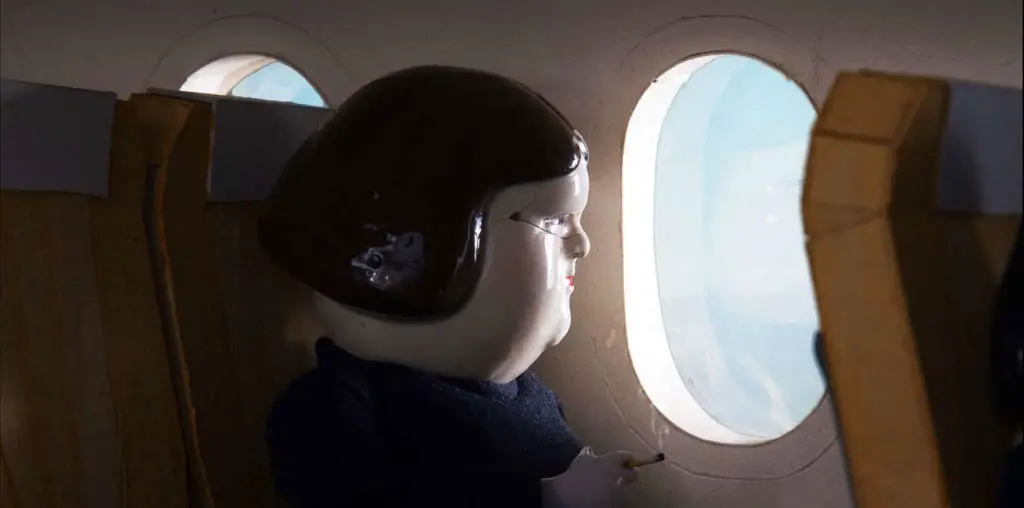
Stephane (Gael Garcia Bernal) is a peculiarly awkward young man, raised in Mexico, who has returned to France to live with his French mother. (His father just died of cancer.) Stephane is a budding artist, and Mom lured him to Paris with the promise of a creative job at a calender company, but the job turns out to be dull. Stephane has a complex, detailed dream life, which he structures as a TV show, and which seems to be much more vivid than his waking life. He falls in love with his pretty neighbor Stephanie (Charlotte Gainsbourg,) and he spends the movie trying (unsuccessfully) to win her heart. She is alternately charmed by his boyish imagination and appalled by his lack of basic interpersonal skills.
Since none of the film’s many dream sequences have much of the look, sound, or texture of actual dreams, I spent the first part of the film wondering what was really driving the story. A seemingly peripheral scene where Stephane’s co-worker, the equally stunted, sex-obsessed Guy, reacts negatively to a TV show about nurses in a wet T-shirt contest, and makes Stephane help him throw his TV set off of a bridge into the Seine, turns out to be pivotal. The real subject of “The Science of Sleep,” in retrospect, appears to be television, and the way it radically truncates our ability to treat each other as full human beings. Indeed, the title “The Science of Sleep” is a pretty good description of the television industry: technology designed to put an entire population to sleep. The film also seems to chronicle, probably unintentionally, Gondry’s quest, as a director from the world of music videos, to transform himself into a film director.
It is no accident that Stephane’s dreams take the form of a TV show. Stephane talks to girls the way a teenager who had spent years jerking off to music videos of pretty girls might, as if he had never had a conversation with a real person before. He obsessively plays with his “one second time machine” which rolls back moments of time as if playing back a videotape, and he seems to have a million ways of avoiding the simple act of being present with another human being. Above all, he treats people as if they were prerecorded illusions, rather than living persons. No wonder his big art project consists of a calendar illustrated by entertaining pictures of famous disasters from (televised) history.
Stephane’s dreams, with their odd mixtures of emotional and visual trivia, can be seen as a metaphor for Gondry’s recipe for making music videos, and it is possible to see Stephanie as a metaphor for the Film World which Gondry longs to be a part of. Like TV and film, Stephane and Stephanie are in fact close neighbors, with almost the same name as each other, but Stephane discreetly pretends to live further away, because Stephanie wouldn’t want to be reminded of their proximity. Their relationship, such as it is, revolves around his fantasy that they will make a film together. Stephanie treats him with the same sense of disdainful fascination with which many film directors view television. Stephane, who speaks Spanish and English, is a distinctly foreign import, while Stephanie is as French as Truffaut and Renoir.
Lacking an involving plotline or believable characters, the movie positions itself mainly as a pretext for playful, inventive images. Yet Gondry is not actually visually inventive: although the animation shows a creative use of unusual materials such as cardboard and cellophane, the compositions are not especially striking in their use of color, space, texture, or visual rhythm. Lacking a credible emotional subtext, they also have nothing to (convincingly) express. This leaves the film with very little substance for the viewer to hold on to.
